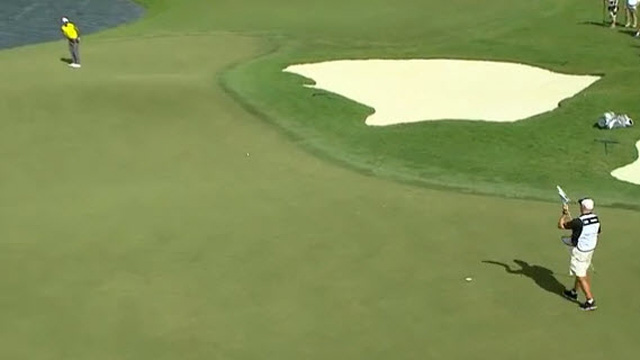NEWS
A Lesson Learned: Hitting long putts

With some of the higher scores shot this week at the WGC - Cadillac Championship at Trump Doral, I know there are a number of golfers out there who say it's fun to see the top players hitting shots like we all do. I'd be a rich man if I had a nickel for everytime I heard an amateur say "I can hit that shot" when seeing a Tour pro hit a less than stellar approach or tee shot. Let me tell you, as Bobby Jones once said of Jack Nicklaus, "Nicklaus played a game with which I am not familiar," most of the time the game the Tour guys are playing are not the same that we are.
There is one shot however that is practically identical no matter who or where or what. That's the putt. Most of us will never hit a 340 yard drive or spin a wedge back 20 feet to nestle by the flag, but any of us can (and probably have) hit a few bombs on the green. And in many ways, those are the most fun shots to hit, right?
Within the last week or so, golf fans watched two long putts drop in dramatic fashion. One 75-foot putt gave Paula Creamer a win on the LPGA Tour. The other was a 92-footer that dropped for world No. 1 Tiger Woods. Obviously, neither player knew they would make the putt, but they practiced a couple of fundamentals that made for better long putts and at the very least, gave the ball a chance to go in. So for this week's "A Lesson Learned", I'd like to offer a few tips on how to approach those long putts that we all face a few times a round.
More: Get the most out of your putting
1.) Relax your arms: Feel some freedom in your stroke. Most people get too tight and tense and then try to hit the putt hard. Instead, feel the putter head swing and make a long, fluid stroke. This is no time for the no wrist, all shoulders stroke. Think smooth and solid contact more than a hard pop.
2.) Keep your head still: To get enough energy for that long putt, you need to hit the sweet spot of your putter. And to do that, you need to stay steady as you stroke the ball. Try keeping your eyes on where the ball was for a couple of seconds after impact. Sam Snead said if you look up early, you won't like what you see.
3.) Practice!: Don't wait until you're out on the course to see how you handle the long putts. When you're practicing on the putting green, drop a couple of balls and putt them across to a far target. Speed and line still matter, and it will help your shorter putt skills as well.
Of course, don't put too much pressure on yourself when faced with one of these long putts. I mean, from 75 feet (like Paula's putt) or certainly from 90+ (like Tiger's), I understand there is a good chance I'll three-putt. So I just relax and give it a good roll. If I manage to two-putt it, that's a bonus. And making it is just even more so. But making extraordinary shots is about being open to the possibility. With these type putts, I tell myself, the ball has to finish somewhere - why not in the hole?
John Crumbley is the Director of Golf for Cornerstone Golf Properties. Crumbley teaches out of Mystery Valley Golf Club in Lithonia, GA. You can follow him on Twitter at @JohnCrumbleyPGA
